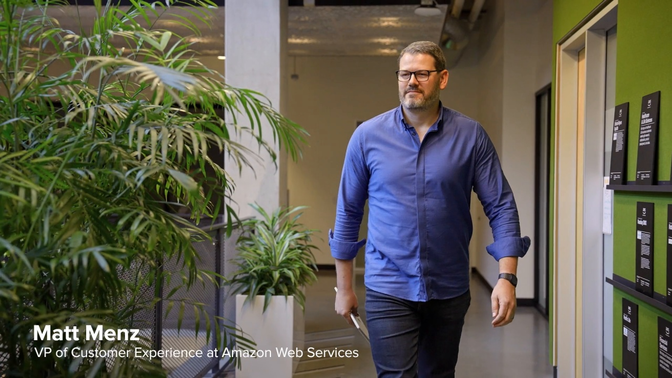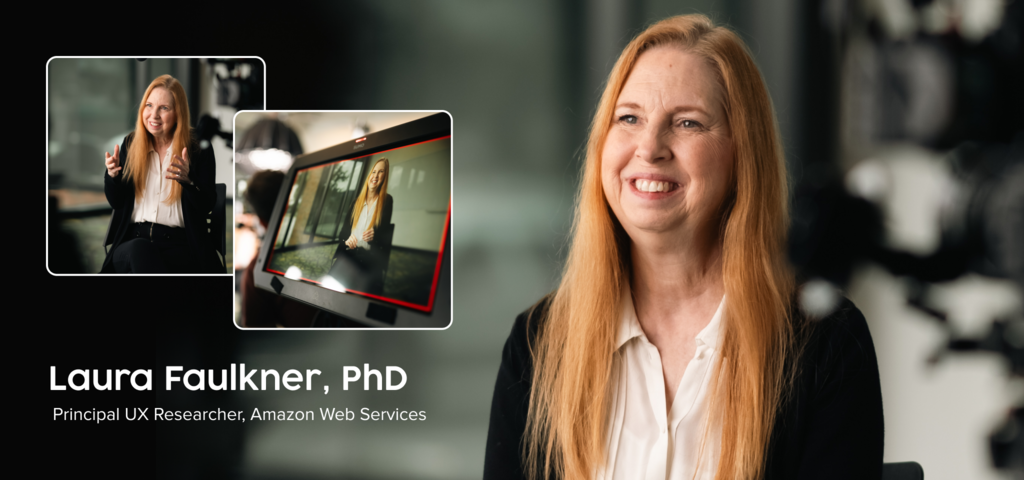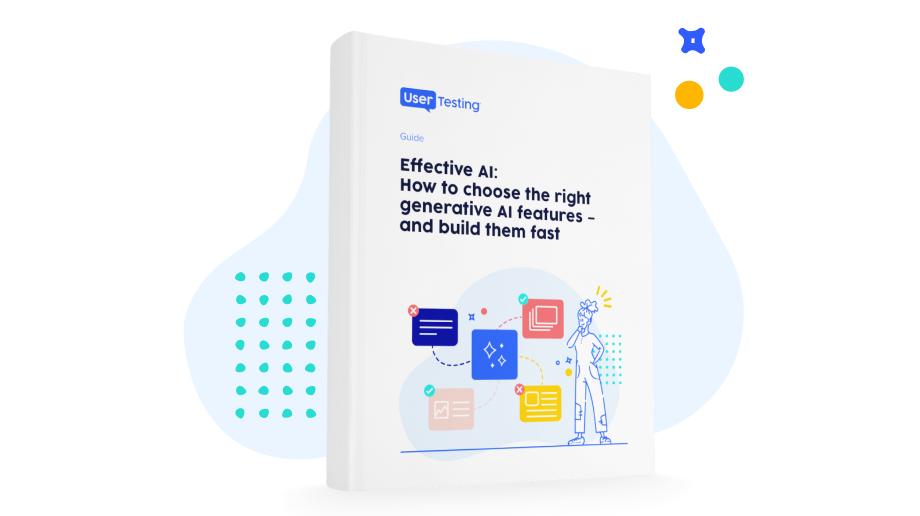
Technology
AWS + UserTesting
Discover how AWS works with UserTesting to bring their customer obsession principle to life


About the company
Amazon Web Services (AWS) is a subsidiary of Amazon.com, Inc. that provides on-demand cloud computing platforms and APIs to individuals, companies, and governments on a pay-as-you-go basis. Amazon launched the service in 2006. It has since become the world's most comprehensive and broadly adopted cloud platform, offering over 250 fully-featured services from data centers globally.

Get started now
Contact Sales Advanced product development testing process across teams
Advanced product development testing process across teams New and optimized AI functions
New and optimized AI functions Additional transparency within the AWS Pricing Calculator
Additional transparency within the AWS Pricing Calculator
AWS creates and manages the functions that developers use to build the core substance of the Internet, including Amazon.com itself, Prime Video, and more. The company has large and small customers of all types around the world.

Long before AWS products go live, the organization’s researchers, designers, and developers seek to understand what to build, how to build it, and ensure it works in the ways that customers need.
According to Matt Menz, AWS’s VP, Customer Experience, “We need targeted research to inform high quality decisions. This allows us to have a quick and direct impact on the customer's experience.”
Partnering with UserTesting enables AWS to quickly build the functions that will help their customers (and the customers of their customers) around the world.
Over time, Amazon’s business leaders have made UserTesting a fundamental part of the organization’s product development process. Hearing directly from customers early, and integrating their feedback into the creation of how products look and work, fits snugly with the very first of Amazon's 16 Leadership Principles: "Customer Obsession."
That principle states: "Leaders start with the customer and work backwards. They work vigorously to earn and keep customer trust. Although leaders pay attention to competitors, they obsess over customers." This principle sets the tone for the entire company culture.
The leaders of the AWS Customer Experience Organization recognize that you can meet the needs of customers by harmonizing data with real-world sentiment from existing and potential customers. Like Amazon founder Jeff Bezos, Menz believes in the power of the anecdote. “Because the customer is so central to how we work, the key piece is to make sense of the data and to understand what's the most meaningful anecdote, the most meaningful set of results to be able to inject into the discussion. That's where the magic is–to understand that synthesis.”
Sarah Alvarado, UX Research Manager at AWS, explains how the organization’s partnership with UserTesting has helped them work across teams to research, test, develop, and publish some of the world’s most powerful functions for software developers.
“Over the course of two years, we’ve conducted evaluative research with hundreds of AWS customers and we've also helped to upskill and uplevel the team by giving product manager and designer partners the ability to leverage UserTesting as a platform–to get in front of our customers and ensure that we're gathering feedback early and often to make the experiences better for them.”
AWS has excelled at testing and developing artificial intelligence (AI) functions in particular.

The AWS Pricing Calculator
The AWS Pricing Calculator is a free web-based tool for existing and prospective customers to create cost estimates for using AWS services. In past years, customers would rely on sales reps to configure their options and show the related costs. Today, customers use the Pricing Calculator to make informed decisions about their investments in AWS by understanding potential costs upfront, comparing different service configurations, and exploring alternative solutions.
Research showed that customers had significant interest in using the calculator, but when AWS first launched the function the usage levels were surprisingly low. AWS ran experiments with UserTesting to find out what happened.
According to Laura Faulkner, Principal UX Researcher, “In our user research for the Pricing Calculator, test participants told us they wanted to see how each option affected the price. They wanted to see what we saw and what our specialists saw. With the Pricing Calculator, we were able to add greater transparency of what each option costs and what the impact was on the final price.”

Amazon Kendra
Amazon Kendra is a powerful search tool that uses AI and machine learning to help organizations more easily build advanced search functions. Kendra indexes databases and documents from repositories like Microsoft SharePoint, Salesforce, ServiceNow, as well as unstructured data like PDFs, Word documents, and emails. Kendra’s algorithms then analyze these documents to understand their context and integrate that information into search results.
Once they learned about the pain points from developers, AWS designers created mockups in Figma and brought them into UserTesting. They ran tests with a broad range of subjects, from the smallest solo developers to developers on enormous teams who need streamlined methods to collaborate.
Laura Faulkner describes how running experiments helped the organization build Kendra to function in the ways that customers need.
“We worked with UserTesting to run a number of studies over a long period of time. That's a lot of content. We wanted to discover two things: how do we do this well for the builders, but then also have great results for the end users of the searches?”
The early results are intriguing. AWS learned that their developer audience and their technology audience wanted a dashboard. The dashboard could help them track the effectiveness of the searches for users, fine-tune the search models, and improve them over time.
AWS developed the dashboard in Kendra and noted that customers use the platform to automatically fix or remove dead links, as well as to track user behavior. Other improvements will follow in time, as the team continues to work with UserTesting to increase usage and enhance the performance of Amazon Kendra.
UserTesting gives us speed. Speed to recruit, to analyze, and engage with a wide range of personas. We need a partner like UserTesting to bring it all together.Matt Menz VP, Customer Experience, Amazon Web Services
With UserTesting, we conducted prototype testing, but even before that we did concept testing and interviews and deep dives that gave us all sorts of information about how developers work, what they want to do and what's important to them.Laura Faulkner, PhD Principal UX Researcher, Amazon Web Services
UserTesting allows us to get in front of our customers and learn their first person perspective on how they use our tools and how we can make the experiences better. Getting in front of customers ensures that we are making the right investments and building the experiences in the right way to deliver value.Sarah Alvarado UX Research Manager, Amazon Web Services

How to choose and develop the right AI features
Get actionable steps to help you get your AI development right on the first try.









